Plastic surgeons talk about the beauty of the female breast in much the same way as sculptors – in terms of natural form, good filling and proportions. Perhaps that is why the consultation of a patient who wants to change the shape of the breast lasts quite a long time. Beautiful breasts – this is not her form, which was created in imitation of an idol or, due to a momentary whim, to acquire a magnificent bust. The volume of the mammary glands and their shape should be adjusted in accordance with the parameters of the whole body. How to do it right, what methods of creating beautiful breasts are used today and for what indications – read the expert's interview at Estet-portal.com.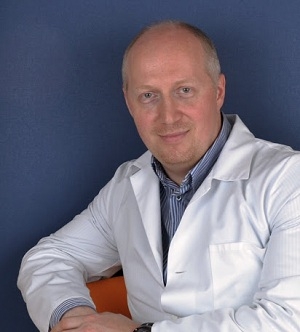
Sergei Valerievich Kadochnikov, PhD, Leading Surgeon, Virtus Clinic
What breast plastic surgeries, in your opinion, are the most popular among patients today?
For many years, the most requested breast surgery has been breast augmentation. Of course, in recent years, the aesthetic requirements for the appearance of the breast have changed somewhat, and, accordingly, the wishes of patients regarding the size and shape of the breast have changed. I can say with confidence that the days of overfilled mammary glands are a thing of the past. Now in trend natural fullness, natural shape, the adequacy of the volume to the proportions of the body, i.e. those volume and shape of the breast, which are combined with the constitution of the patient and & nbsp; her physique. In my opinion, this is correct not only from an aesthetic point of view, but also from a functional point of view – modern women a lot move, work, play sports, therefore, excess breast volume can be completely uncomfortable with an active lifestyle. beautiful breasts is a combination of good form, sufficient but not excessive volume and its proportionality to the overall physique.

What are the indications for breast augmentation or reduction, breast lift?
In practice, indications for breast augmentation arise in case of insufficient development of the mammary glands during puberty, the so-called. "hypoplasia of the mammary glands" or, more simply, "small breasts" - not corresponding to the patient's physique and her wishes.
Another proportion of patients come to see a plastic surgeon complaining of loss of breast volume associated with breastfeeding or massive weight loss. In patients with initially small breast size, a breast augmentation operation is performed using implants or own fatty tissue (breast lipofilling). In patients of the second group, breast augmentation surgery is often combined with breast tissue tightening and removal of excess stretched skin.
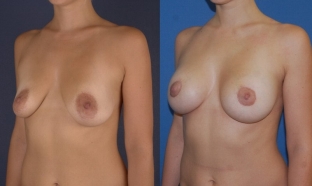
The third group of patients who visit a plastic surgeon complaining about the shape of their breasts, – these are women with excess volume of mammary glands – hypermastia. Their volume of the mammary glands can become an object of envy, but complaints arising from the severity of the breasts for pain in the neck, thoracic back, pulling sensations in the tissues of the breast itself, skin diaper rash and other related problems lead these women to the office of a plastic surgeon. Operations performed in this condition help not only to restore a good shape of the breast, but also to make everyday life comfortable and painless.
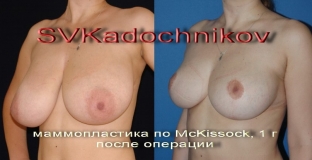
In what cases can you refuse a patient a breast correction?
The success of breast enhancement surgery (enlargement with implants, lipofilling, lift, breast reduction) depends on many factors. Including the qualifications and experience of the surgeon and the rest of the medical staff surrounding the patient, the conditions in which the operation is performed (working with implants requires an operating room with special sterile conditions), the use of modern high-quality implants or modern laboratory methods for preparing the patient's fatty tissue if lipofilling is performed. When preparing a patient for surgery, special attention is paid to a thorough and comprehensive examination of the patient, because. the presence of certain concomitant diseases can adversely affect the formation of a capsule around the implant or the healing of the formed flaps after a breast lift or reduction.
Also, a contraindication to surgery may be the impossibility of fulfilling the wishes of the patient. For example, get a large size with an initial small breast size, slender physique & nbsp; and too dense and low-stretch fabrics & nbsp; happens to be impossible. Although, recently, special expander implants have been used to stretch tissues, allowing you to add volume after surgery as the tissues are stretched. Often this technique is used in breast reconstruction after oncological operations and in difficult cases of breast enlargement.When performing – braces, breast reduction – smoking is a contraindication. It can lead to a significant deterioration in blood flow in the operated areas and tissue necrosis.
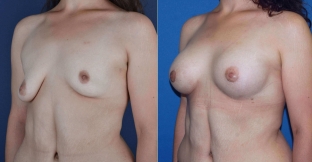
Feeding is possible if breast augmentation is performed correctly. This is independent of – whether inframammary, under the areola or in the armpit. Also say – this question is often asked by patients - that implants should not be removed before breastfeeding. Feeding can be disturbed by significant trauma to the mammary ducts, which should be avoided by the surgeon during conventional breast augmentation operations.
When reducing or a breast lift with the patient, it is possible to keep feeding, but this is not always feasible due to the nature of the operation and the need to reduce the amount of breast tissue.
A frequent question is the question of the shape of the breast after feeding - how much will it change? From practice: in most patients, breast tissue correction after feeding is not required; in some patients, the implant is replaced with a larger implant; a breast lift is performed on an existing implant.
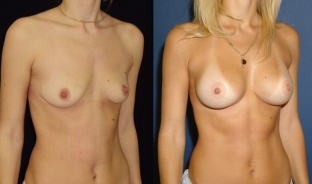
There is a range anomalies in the development of the mammary glands, in which the operation of breast augmentation requires special preparation, planning and technique. For example, this is the so-called. tubular breasts, when the chest has a very small base on the chest and, as it were, becomes elongated. With a pronounced degree of tubularity, it is extremely difficult to achieve a good shape of the breast, and special surgical techniques are used during the operation to create good filling, especially in the lower breasts.
Surgeries for congenital or acquired breast asymmetry are often complex. In such cases, different methods are combined – breast augmentation, lift, breast reduction.
The most difficult cases – this is the restoration of the breast after oncological surgery or in case of congenital absence of the breast, the so-called. amastia, which occurs in Poland's syndrome – anomalies in the development of one of the halves of the chest.
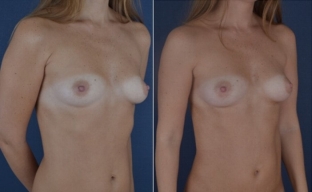
In those situations when implants cannot be used due to existing contraindications or the patient's unwillingness to wear foreign material, the method of filling the breast with its own adipose tissue is used. Liposuction is performed on problem areas of the body, where there are so-called. "fat traps", and the resulting fatty tissue, after special preparation, can be introduced into the tissues surrounding the mammary gland to create additional volume.
Modern Methods for processing adipose tissue in a laboratory using biological stimulants for the engraftment of transplanted fiber make it possible to obtain a stable and aesthetically acceptable result even without the use of foreign materials. These techniques are actively used now in the daily practice of the clinic. A promising technique is the cultivation of fat grafts in the laboratory from pre-taken small amounts of adipose tissue and stem cells of the patient. Lab-grown adipose tissue can be used for breast augmentation in lean patients with little adipose tissue where conventional liposuction and fat harvesting are not applicable.






Add a comment